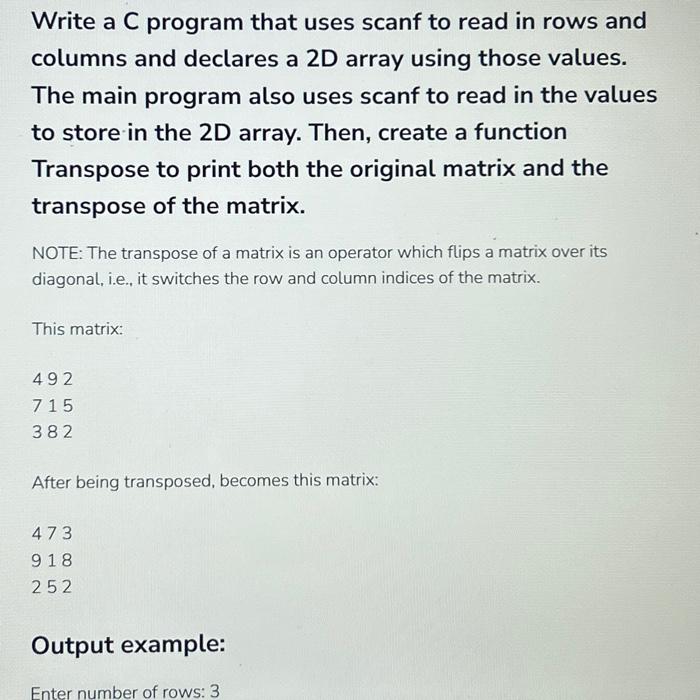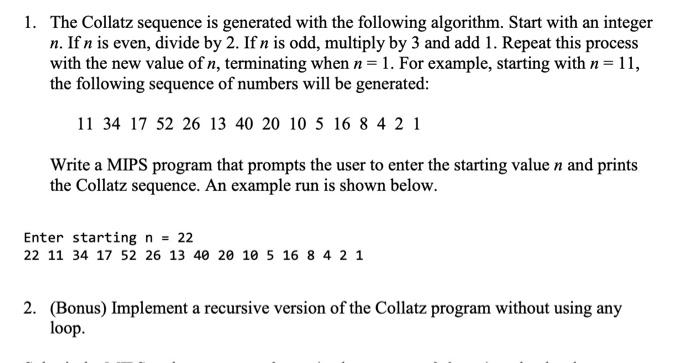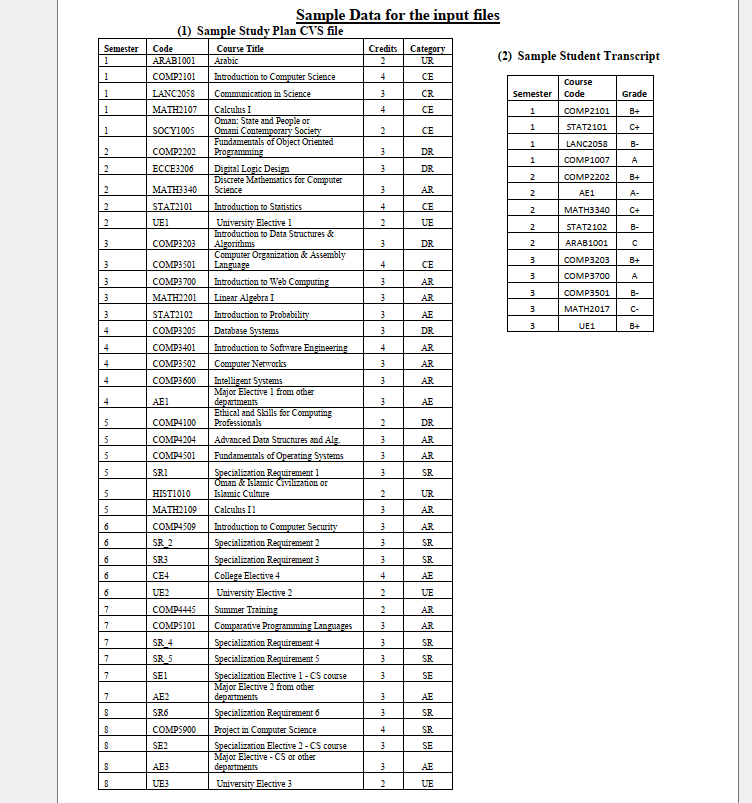
Write a C program that uses scanf to read in rows and columns and declares a 2D array using those values. The main program also uses scanf to read in the values to store in the 2D array. Then, create a function Transpose to print both the original matrix and the transpose of the matrix. NOTE: The transpose of a matrix is an operator which flips a matrix over its diagonal, i.e., it switches the row and column indices of the matrix. This matrix: 492 715 382 After being transposed, becomes this mat



